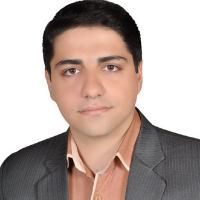Predicting Moisture Content of Garlic Slices During Infrared Drying Using Artificial Neural Network
Garlic (Allium sativum L.), is one of the most perennial spice crops, which is grown all over the country and especially in plains of India and is used as the spices or condiment throughout the world. Fresh garlic clove has a high moisture content of around 70%, which can be easily spoiled due to microbial contamination also sprouting and rotting are the main causes of losses during storage (Zhou et al. 2017; Malakar et al. 2021). Drying is an energy-intensive unit operation in food preservation, as it removes the excess moisture content and enhances the shelf life of food products (Salehi 2020b). Garlic has found uses in its dried form, as an ingredient of precooked foods and instant convenience foods including sauces, gravies and soups, has led to a sharp increase in the demand of dried garlic (Sharma and Prasad 2006). Infrared radiation (IR) is developed in recent years with the advantages of higher puffing rate, energy saving, and uniform temperature distribution giving a better quality (Salehi 2020b). When exposed to infrared rays, samples absorb the radiation, leading to uniform molecular heating without impacting the temperature of the air in the drying chamber. As a result, drying rates are improved, foods are dried faster, energy consumption is decreased, and product quality is greatly preserved (Doymaz et al. 2015). Artificial neural network (ANN), known as connected machine model, which can simulate the basic process of biological nervous system to deal with external things. It was a computing system, which developed based on modern neuroscience, computer science, biology, and other disciplines, and it can simulate the human brain and nerve tissue (Saffari et al. 2009; Salehi 2020a). The ANN has attracted the attention of scholars in many fields due to its good fault tolerance and excellent nonlinear approximation ability of self-learning and self-organization. The structure of the ANNs model is formed using experimental data under consideration and therefore can represent and predict the data with high accuracy. ANNs has been used for modeling drying kinetics, with high accuracy (Onwude et al. 2016; Satorabi et al. 2021). In this study, the effect of the infrared treatment time, the samples distance from the infrared lamp (at three levels of 5, 7.5 and 10 cm) and the samples thickness (at three levels of 3, 6 and 9 mm) on the change in the moisture content of garlic slices inside an infrared dryer was investigated.
Slices of garlic (at three levels of 3, 6 and 9 mm) were prepared with the aid of a cutter. The garlic slices were dried in an infrared dryer (250 W infrared radiation lamp (NIR), Noor Lamp Company, Iran). The weight changes of garlic slices was measured by using Lutron GM-300p digital balance (Taiwan, the sensitivity of ±0.01 gr). All measurements were done in triplicate. In this study, the Neurosolution software (release 5, NeuroDimension, Inc., USA) was employed for making the ANN model. The experimental data order was first randomized and then total data were randomly separated into 3 partitions: training (20%), validating (20%), and testing data (60%). The testing data were used for prediction of the trained network performance on unseen data. In the hidden layers and output layer a hyperbolic tangent activation function was used. The Levenberg–Marquardt (LM) optimization method was applied to network training. Also, a sensitivity analysis was done to supply the measure of relative significance between the inputs of the ANN model and to show how the model output changed in response to input changes.
The results showed that by reducing the samples distance from the infrared lamp and also reducing the samples thickness, the amount of removed moisture from the samples increases and the drying time decreases. The time required to reach the moisture content of garlic slices with a thickness of 9 mm to about 10% at distances of 5, 7.5, and 10 cm was 50, 54, and 64 minutes, respectively. Also, the time needed to drying of garlic slices with thicknesses of 3, 6, and 9 mm was 28, 33, and 40 minutes, respectively (the distance between the samples and the radiation lamp was 10 cm). This process was modeled by an artificial neural network with 3 inputs (the treatment time by infrared, the samples distance from the infrared lamp and the samples thickness) and 1 output (moisture content). The results of artificial neural network modeling showed that the network with 12 neurons in a hidden layer and using the Hyperbolic tangent activation function can predict the moisture content of garlic slices during drying by infrared dryer (r=0.964). Also, the values of mean squared error (MSE), normalized mean squared error (NMSE) and mean absolute error (MAE) for optimum network were 20.637, 0.070 and 3.494, respectively.
The use of artificial neural network approach for modeling the drying kinetic and moisture content changes of garlic slices helps in programming and developing smart control systems, which is very useful for automated food processing systems.
- حق عضویت دریافتی صرف حمایت از نشریات عضو و نگهداری، تکمیل و توسعه مگیران میشود.
- پرداخت حق اشتراک و دانلود مقالات اجازه بازنشر آن در سایر رسانههای چاپی و دیجیتال را به کاربر نمیدهد.



